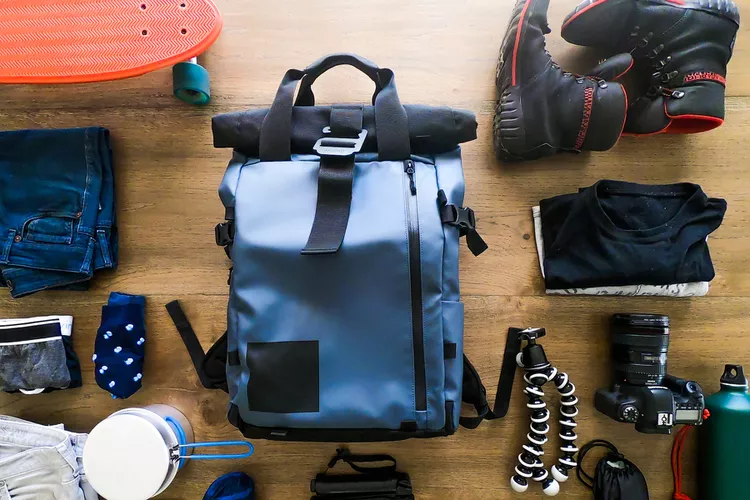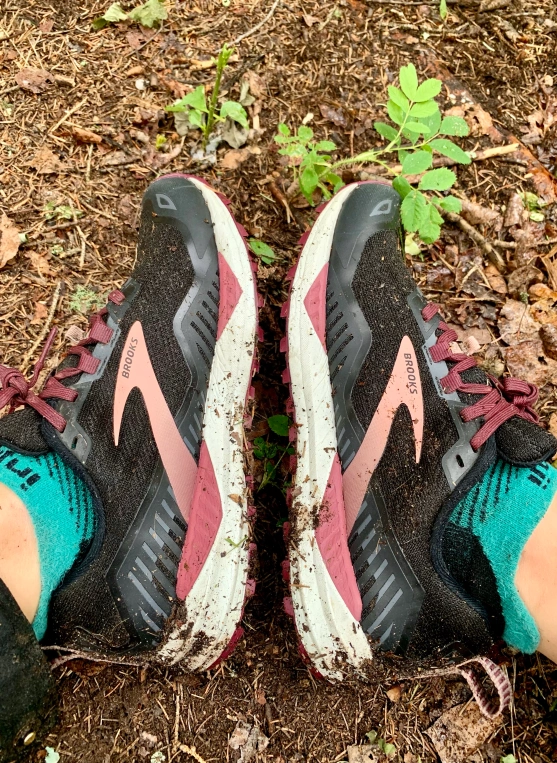
When hiking enthusiasts first think of boots, they likely envision the traditional heavy leather boots that sit above ankle height. These offer supreme protection and support with burlier uppers, grippy soles, and sturdy heels.
Hiking shoes and trail runners are trendy among those seeking to cut weight from their packs. The trick to this is finding the footwear that works for your needs.
Lightweight Trail Runners
Many backpackers choose trail runners to cut a few ounces off their pack weight, reducing the load their feet and legs carry throughout a long hike. Some brands even offer shoes rated for thru-hiking to support your heavy load and the extra demands of long-distance hiking (see our shoe roundups).
While running shoes typically provide minimal ankle support and less sole cushioning, numerous hikers value their capacity to connect with the trail with each step. Trail runners, such as those offered by Hoka One One, go a step further by often featuring a convenient quick lace system. This time-saving feature proves especially beneficial on chilly mornings, sparing you the hassle of fumbling with traditional laces and allowing you to gear up for your trail adventures swiftly.
If you are hesitant to try trail runners for your hikes, start on smooth, well-marked paths and work up to rocky terrain with more elevation change. You may be surprised at how quickly your feet adapt to the lightweight feel of these shoes.
To increase the stability of these shoes, look for models with a rock plate underfoot or enhanced toe protection that can protect your toes from hitting rocks and roots on the trail. And don’t feel free to try out a few different pairs to find the best fit and style for your foot. Exceptionally light materials also facilitate a breathable design that helps your feet stay cool, comfortable, and dry during a hot, sweaty hike.
Heavy Boots

Heavier boots might be your best choice if you plan to hike in terrain requiring sturdy footing and ankle support. Heavier boots made from leather or a combination of rigid synthetic materials typically feature ample rands to take the brunt of scuffs and abrasion and deep aggressive lugs to provide superior traction on loose ground. They’re also cut high above the ankles to give your feet strong support to help prevent trip-killing sprains.
Heavier hiking boots are often stiffer than lighter shoes or running sneakers, requiring longer to break in. That’s why testing them out before taking a long hike is essential. Put on the socks and insoles you’ll wear when you hike, and lace up your boots snugly but not too tight. If you’re carrying a heavy backpack, add that to the equation and walk around your neighborhood or local park to see how your feet shift inside the boots as you go up and down hills.
If your feet feel swollen after hiking for a few hours, that’s a sign that the fit of your boots is too tight and that you need to loosen them up a bit. You should always consult the manufacturer’s instructions for proper care of your shoes and purchase them from a retailer with a solid return policy.
Mid-Range Trail Runners

Trail runners are a great way to shave a few pounds off your backpacking gear, but they’re less durable than the large boots that have been the typical hiking footwear for decades. That’s not to say that they aren’t comfortable, though; they tend to offer more cushioning than a standard running shoe while offering the stability and support of a hiking boot.
Like a boot, trail runners should have deep, self-cleaning lugs that grip changing terrain like a tire hugs the road. They may also have a slightly stiffer sole than a running shoe to provide more “torsional rigidity,” which means they are less likely to twist under severe pressure from the feet. Many of these shoes have a wider toe box to accommodate wide feet, while others use a zero-drop design to allow the foot to remain in its natural prone and splayed position while hiking.
Full Trail Runners

If you are looking for a lightweight shoe that molds to your feet and keeps you upright, trail runners can make your hike much more comfortable. They are designed to excel on rockier terrain and offer more durability than a classic running shoe. They also have more cushioning and are better for saving energy (they say a pound on your feet is worth five pounds on your back) and keeping your feet cool, dry, and responsive to changing trail conditions. Some thru-hikers swear by their trail runners and never return to boots.
There are also “trail runner boots” that have been given a longer top, which is an excellent compromise for those who can’t decide whether to go for a full trail runner or a boot. These shoes look the same as their low-top versions and feel the same, except they are heavier and more durable.
Hiking footwear is highly personal, and you’ll only figure out which pair works best after hiking in them for a long time. But if you take the time to find the right shoes for your hike, your feet will thank you. And a happy, healthy pair of feet will keep you hiking for much longer.




